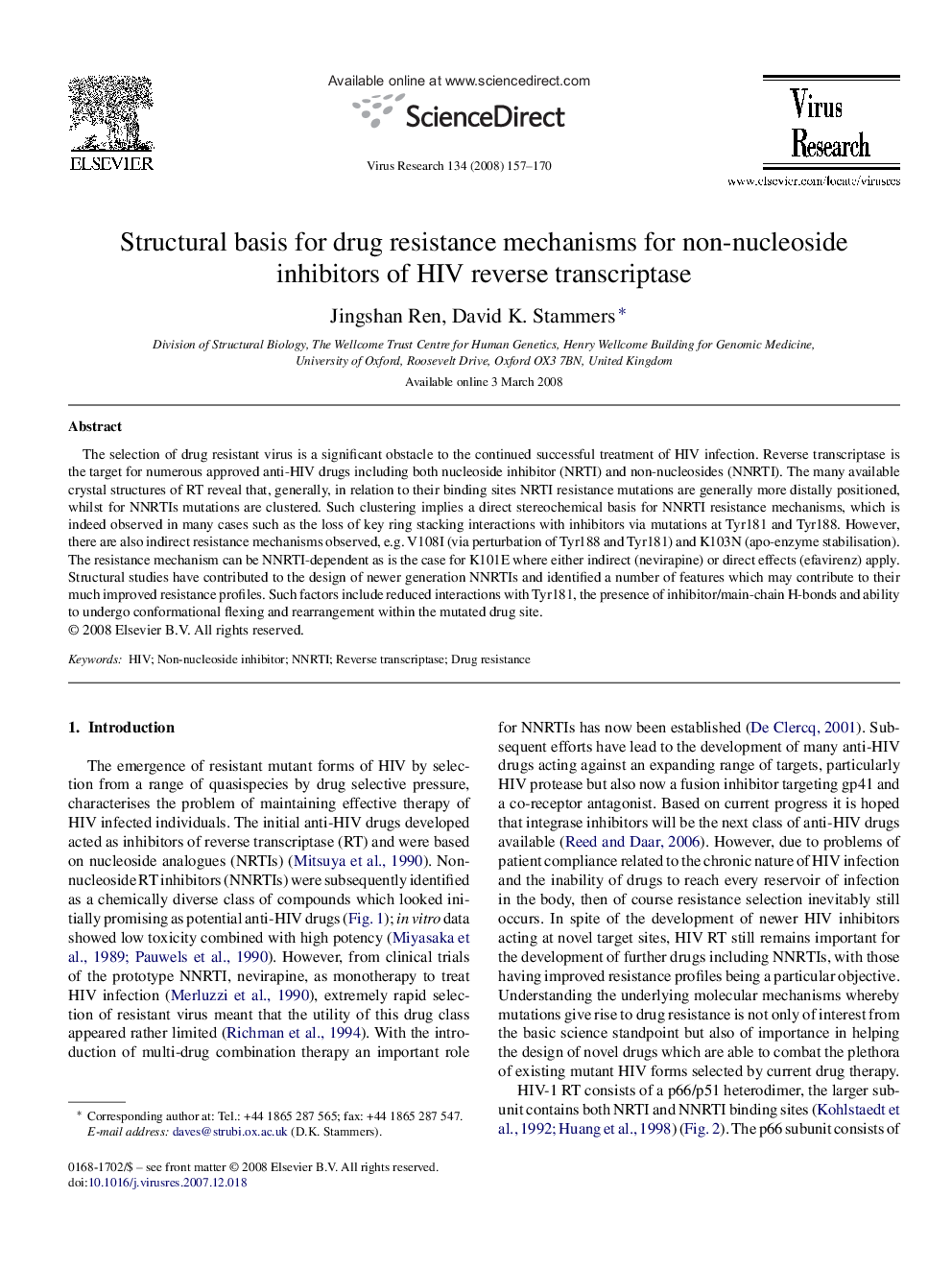| Article ID | Journal | Published Year | Pages | File Type |
|---|---|---|---|---|
| 3430293 | Virus Research | 2008 | 14 Pages |
The selection of drug resistant virus is a significant obstacle to the continued successful treatment of HIV infection. Reverse transcriptase is the target for numerous approved anti-HIV drugs including both nucleoside inhibitor (NRTI) and non-nucleosides (NNRTI). The many available crystal structures of RT reveal that, generally, in relation to their binding sites NRTI resistance mutations are generally more distally positioned, whilst for NNRTIs mutations are clustered. Such clustering implies a direct stereochemical basis for NNRTI resistance mechanisms, which is indeed observed in many cases such as the loss of key ring stacking interactions with inhibitors via mutations at Tyr181 and Tyr188. However, there are also indirect resistance mechanisms observed, e.g. V108I (via perturbation of Tyr188 and Tyr181) and K103N (apo-enzyme stabilisation). The resistance mechanism can be NNRTI-dependent as is the case for K101E where either indirect (nevirapine) or direct effects (efavirenz) apply. Structural studies have contributed to the design of newer generation NNRTIs and identified a number of features which may contribute to their much improved resistance profiles. Such factors include reduced interactions with Tyr181, the presence of inhibitor/main-chain H-bonds and ability to undergo conformational flexing and rearrangement within the mutated drug site.
